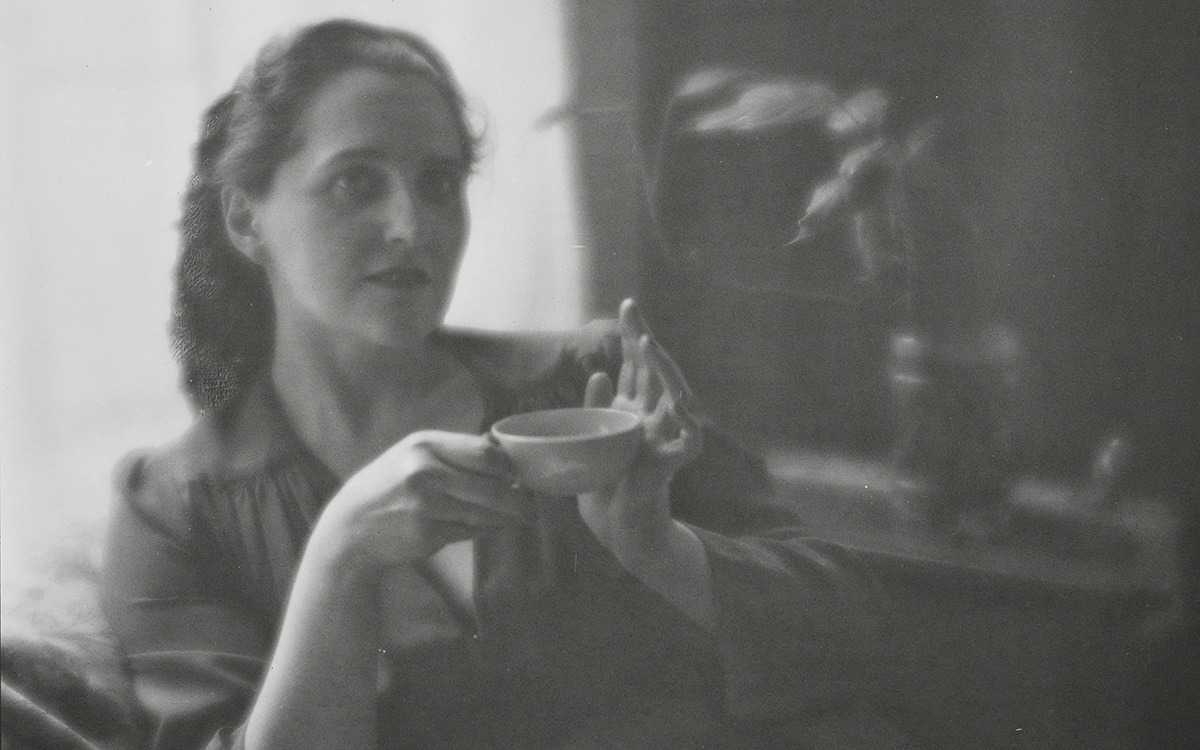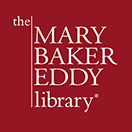Women of History: Henrietta Buckmaster

Gelatin silver print of Henrietta Buckmaster, Novelist, ca. 1940. P1984.1.1203. Clara E. Sipprell. Courtesy of Amon Carter Museum of American Art, Fort Worth, Texas, purchased through a gift of The Dorothea Leonhardt Fund of the Communities Foundation of Texas, Inc.
Listen to this article
Among the records of The Mary Baker Eddy Library, we discovered information on Henrietta Buckmaster. A talented author, journalist, and activist, her efforts to preserve history, and provide an interpretive lens for viewing it, helped secure her a foothold in the writing industry. Briefly married to the author, poet, lyricist, and playwright Peter John Stephens (1912–2002), she brought the practice of Christian Science to her career.1
She was born Henrietta Delancey Henkle on March 10, 1909, in Cleveland, Ohio. Her father and mother (Rae Delancey Henkle and Pearl Lucille Wintermute Henkle) saw to it that she had a good education, sending her to New York City, where she attended the Friends Seminary and the Brearley School.2 This training likely helped her find early success in a writing career; she sold her first story at the age of 12 and continued to write throughout her life. Among her many accomplishments, she authored over a dozen books. She also wrote articles and book reviews for a number of publications, including Saturday Review of Literature and The New York Times.3 From at least 1934 on, she often wrote using the pen name “Henrietta Buckmaster,” as was the case when she published her first book that year, Tomorrow is Another Day.
Over 100 of Buckmaster’s bylined articles appeared in The Christian Science Monitor alone. In fact, her career culminated in an editorship at the newspaper. Beginning in 1973 she headed its “Home Forum” section, and also the “fine arts and literary” page.4
Beyond all her day-to-day newspaper work, Buckmaster continued to produce books. While these included fiction and children’s stories, they often focused on civil rights and cultural awareness—topics she found herself particularly drawn to, as she once described to biographer Anne Commire:
I suppose what has prompted the writing of all my books was a concern for people. I was very young when I wrote Let My People Go [1941] and each day became an extraordinary revelation of the horrors and injustices endured by the black people who were brought here as slaves. And, even more important, their unwillingness to accept bondage, and their own fight against it. Two novels, Deep River [1944] and Fire in the Heart [1948], two nonfiction, Let my People Go and Freedom Bound [1965], two children’s books, Flight to Freedom [1958] and Women Who Changed [Shaped] History [1966] have dealt directly with what I learned of these remarkable struggles against indignity and human violation.5
Even early on in her book writing career, Buckmaster was clearly finding recognition for her work. In 1944 she was awarded a 12-month Guggenheim Fellowship “for the writing of a biography of the period 1830–1865 in New England history, told from the vantage point of William Lloyd Garrison and the antislavery movement.” This followed the 1941 publication of Let My People Go, an account of the Underground Railroad and the abolitionist movement.6
Clearly, Buckmaster’s Christian Science faith informed her work. In a 1967 interview with the Christian Science Sentinel, she detailed her thoughts toward the writing process.
When I am working with a difficult scene, I never push at it intellectually. I pray. Once I had to cut a nonfiction manuscript—my history of the antislavery movement— eighty thousand words. This is book length. I was in tears. My husband said, “There’s no intellectual way of handling this. You need revelation.” And he quoted [Mary Baker] Eddy, “‘Was not this a revelation instead of a creation?’”7 As I turned the manuscript, page by page, I knew Yes or No to each page. I’ve never had such an extraordinary experience. Within two weeks the eighty thousand words had been moved out of the book. And none of it was lost. What was cut was used later.
Writers, painters, poets, physicists move at a highly intuitive level. I think for a writer this intuitive process is composed of many things. Sensibility, discernment, willingness to leave well-trodden paths, patience, curiosity, discipline, love. If one is a Christian Scientist, these qualities take on new dimensions….8
The interview concluded with a quote from Buckmaster on the value of the arts:
A tremendous spiritual potential lies in the arts. We are still trying to master the first steps. How often one falls short is part of the learning. I see far more than I perform. But I’m confident the arts must be used, with deeper and wider purpose, in the service of Life.9
In addition to writing, Buckmaster also co-chaired “The Committee for Equal Justice,” an organization founded in part by Recy Taylor and Rosa Parks in 1944, for the purpose of protecting Black women from sex crimes.10 Historian Danielle McGuire quoted her words in a pamphlet that the committee produced:
“Our hope of a free new world,” she [Buckmaster] said, “our passionate conviction that the day has almost come when women everywhere may raise their children without fear and love their husbands with assurance and be the individuals to which their highest hopes and capacities entitled them. This is what we’re fighting for… When we say ‘Equal Justice for Recy Taylor,’’’ Buckmaster wrote, “we are also saying Equal Hope, Equal Joy, Equal Dignity for every woman, child and man the wide world over… Is that too much to ask?”11
In a 1971 article that Buckmaster wrote for the Sentinel, she brought to light how she saw her faith supporting those humanitarian convictions:
For over a hundred years Christian Science has been pressing for a more profound sense of liberty, especially for those who feel trapped by sex, color, age, or physical condition. There are no such traps for the children of God, Spirit, all-active, unhindered, genuinely equal.
Mrs. Eddy had remarkably illuminating things to say about the end of black slavery, which she saw as prophetic of the end of worldwide enslavement to all the limitations imposed by human ignorance of man’s divine rights.
“Where the Spirit of the Lord is, there is liberty.” As we express this “Spirit of the Lord,” women and men will find their freedom from social or cultural limitations. This makes possible the appearing of the true male and female that God created, each one reflecting all the divine qualities, with no sexual rivalry whatever….
Women’s protest movements call for cultural revolution.
Christian Science calls for something much more profound: spiritual revolution….12
Buckmaster passed away on April 26, 1983. Soon after, the Monitor published these comments from author Tom Simmons:
She was a loyal and open-minded friend, the best kind of friend: she would listen to all kinds of ideas, and talk about them with the youthful excitement of one who delights in the world. Whether we were discussing the behavior of her cats, or the prospects for Africa in the 21st century, or some private matter of our lives, she would give her humor, her insight, and her compassion unstintingly.
She was a woman of rare dignity, courage, and love. She instilled these qualities in “The Home Forum,” so that readers who did not even know her took greatness into their own hearts; and those of us who knew her will keep her in our hearts for all time.13
- “Henrietta Buckmaster, 74, Was a Novelist and Editor,” The New York Times, 27 April 1983, 23.
- See Anne Commire, Something About the Author, Volume 6 (Detroit: Gale Research Company, 1974), 39.
- “An Interview: with a Novelist,” Christian Science Sentinel, 7 October 1967, 1731.
- “Henrietta Buckmaster, 74, Was a Novelist and Editor,” The New York Times, 27 April 1983, 23.
- Commire, Something About the Author, 40.
- “Henrietta Buckmaster,” John Simon Guggenheim Memorial Foundation, 1944, https://www.gf.org/fellows/henrietta-buckmaster/.
- This is the entire passage from Science and Health with Key to the Scriptures that Buckmaster’s husband referenced:
“Genesis i. 5. And God called the light Day, and the darkness He called Night. And the evening and the morning were the first day.
“All questions as to the divine creation being both spiritual and material are answered in this passage, for though solar beams are not yet included in the record of creation, still there is light. This light is not from the sun nor from volcanic flames, but it is the revelation of Truth and of spiritual ideas. This also shows that there is no place where God’s light is not seen, since Truth, Life, and Love fill immensity and are ever-present. Was not this a revelation instead of a creation?” (Eddy, Science and Health with Key to the Scriptures [Boston: The Christian Science Board of Directors], 504.)
- “An Interview: with a Novelist,” Sentinel, 7 October 1967, 1731.
- “An Interview: with a Novelist,” Sentinel, 7 October 1967, 1734.
- Danielle McGuire, At the Dark End of the Street (New York: Alfred A. Knopf, 2010), xvii, 36.
- McGuire, At the Dark End of the Street, 38.
- Buckmaster, “Rock the Cradle, Rock the World,” Sentinel, 28 August 1971,1503–1504.
- Simmons, in “Readers write: On pacifism, Buckmaster, US defense, narcotics,” Monitor, 20 May 1983, 23.

